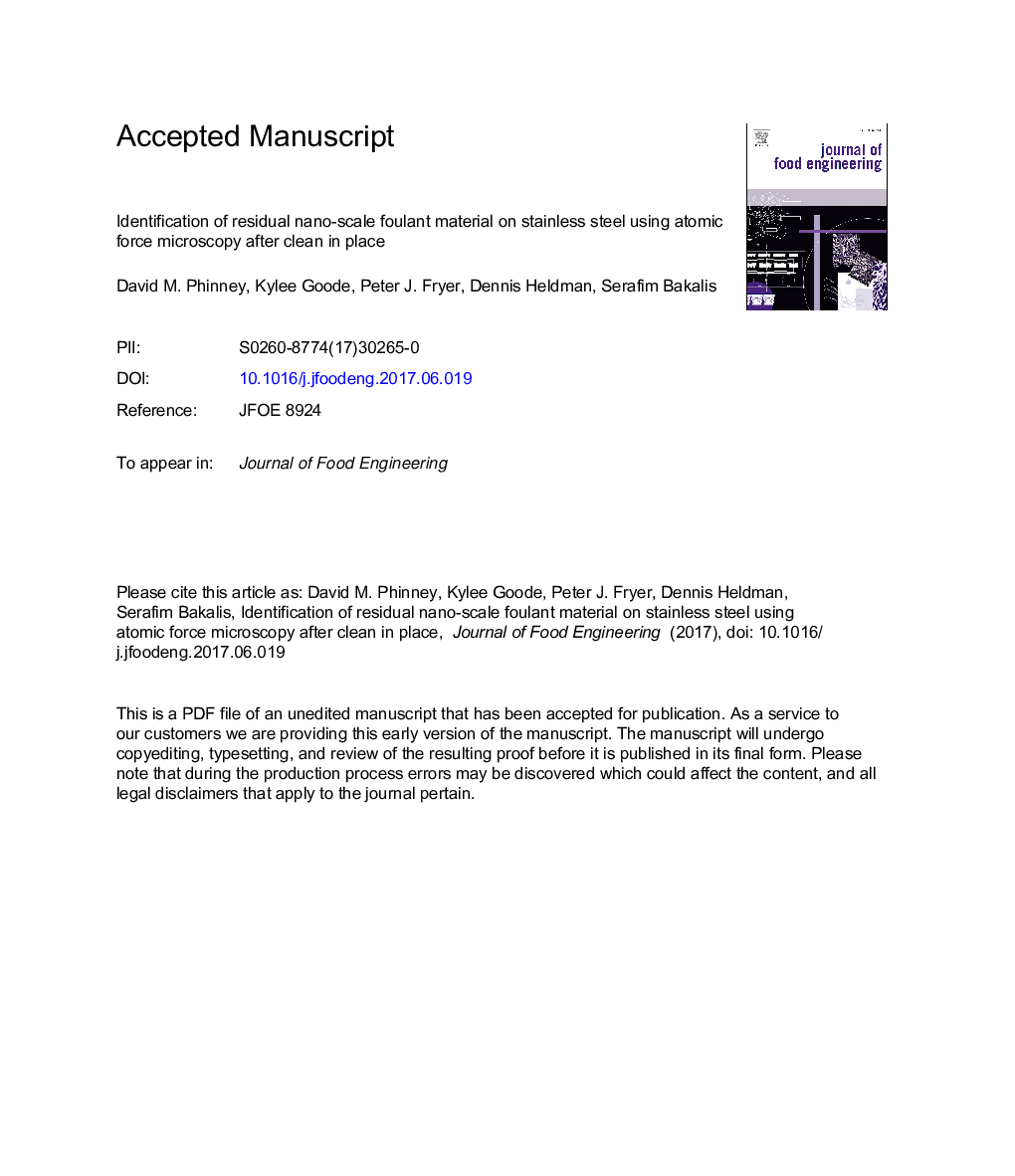| Article ID | Journal | Published Year | Pages | File Type |
|---|---|---|---|---|
| 4908852 | Journal of Food Engineering | 2017 | 34 Pages |
Abstract
During clean-in-place (CIP), solutions are pumped through process equipment to remove soils. In order to validate reductions in CIP inputs, foulants need to be detectable and quantifiable on smaller scales than current industrial practices. In this study, fluorescent microscopy was used for quantifying macroscopic cleanliness of a soiled stainless steel coupon after CIP. An asymptotic model was used to describe the removal of soil as a function of the coupon exposure time and cleaning solution temperature. From these models, cleaning parameters were determined and used to generate coupons predicted to be 99.0 and 99.9% clean. This cleanliness was verified using atomic force microscopy (AFM). AFM identified foulant on the order of 5 μm2 on a 1.0 Ã 104 μm2 area. AFM showed cleanliness ranging from 99.41 to 99.94%. Differences between predicted and actual cleanliness suggest a change in cleaning mechanism at different scales.
Related Topics
Physical Sciences and Engineering
Chemical Engineering
Chemical Engineering (General)
Authors
David M. Phinney, Kylee R. Goode, Peter J. Fryer, Dennis Heldman, Serafim Bakalis,
